Expo 2005 Aichi – Japan
The Italian Pavilion
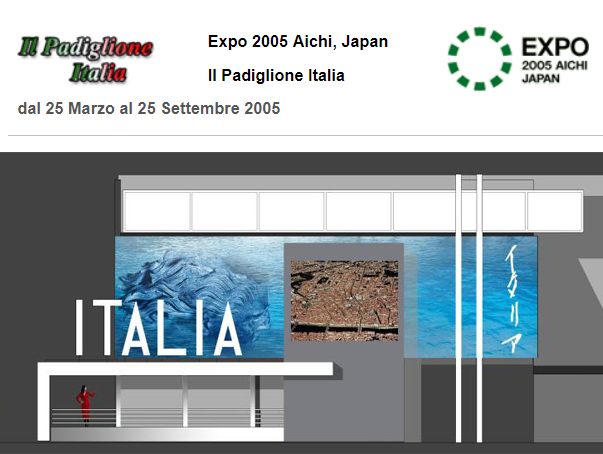
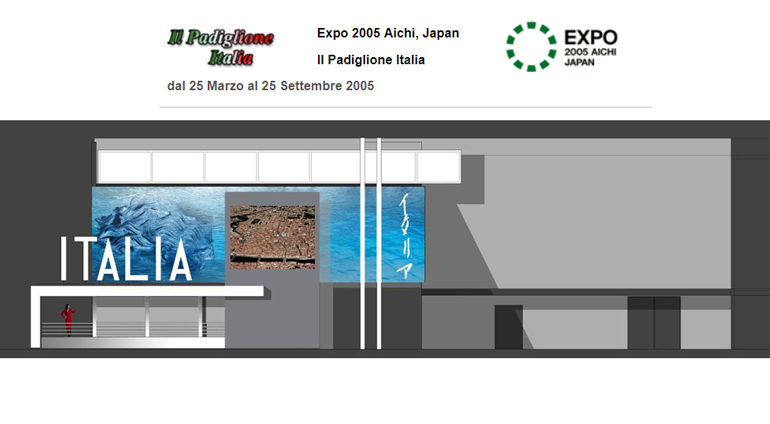
Pavilion: Description of Contents
Premise
The representation of a country in a context such as that of a universal exhibition, already full of many suggestions in itself, to be effective must revolve around a single theme, to which it remains anchored in all its articulations, both conceptual and set-up. In the global collective imagination, Italy has always been considered a place of beauty, for nature and for what men have added over the centuries.
In recent years this perception has changed: in the global collective imagination Italy is no longer just a beautiful place full of beautiful things, but it is also a way of being.
The idea of Italy has also absorbed attitudes and behaviors that are considered pleasant as a whole, to be experienced, imitated or just dreamed of.
Not a perfect society, but a society in which one can live very well.
A synthetic and incisive concept to express all this is that of “quality”, understood not as the absence of defects, but as the specificity of a way of being which, among its many characteristics, also has its structural imperfection, which however increases the unpredictability and therefore the charm.
Wanting to summarize the message that visitors should grasp from the Italian Pavilion, one could say that the quality of Italy’s past is at the service of the quality of the future of all other countries.
The strongest temptation or, if you like, the easiest solution, would be to limit oneself to choosing from the immense artistic heritage that Italy has at its disposal a group of works of sure appeal, which would guarantee the success of the Italian presence.
The limit of this choice, however, would be to confirm something already known, which alone could sound like an inability to go further, that is the quality of the past, when the opportunity offered by EXPO is also to represent the country system in the present and in its future projection.
A sign of the past obviously remains important, it is too strong a factor of interest not to use it as a high and demanding reminder, but it must be used to indicate the roots of an event that is evolving and that has not stopped.
The heart of the Italian Pavilion will therefore be the present, with some signs that express its roots in the past and with a significant projection on the future.
This approach involves at least three basic choices that must have been consistent and integrated with each other: an “environmental” choice, an “artistic” choice, a “historical” choice.
As for the environmental choice, Italy will be represented through an element, water, which involves many symbolic references and allows many set-up solutions: water as a way and therefore the Mediterranean as a crossroads of cultures and today of new integrations and new solidarity.
Water as a place, and therefore lakes, rivers, coasts and what the presence of water entails in the evolution of living and the art of living; water as a resource, and therefore water and the environment, water and health.
But, beyond the set-up configurations, which emphasize its most spectacular components and characteristics, the environmental choice will manifest itself in the Italian Pavilion as a constant and decisive content and programmatic reference: in relation, first of all, to what was agreed in the Protocol of Kyoto and, secondly, to national and international programs for the protection of the environment and the sustainability of production development.
As for the artistic choice, sometimes coincidences appear more suggestive than table programs: in recent years the water, and in this case the water of the Sicilian sea, has returned one of the most evocative works of antiquity, the Dancing Satyr, which immediately became an attraction for lovers of beauty all over the world.
Its suggestion is not only connected to the ancient idea of the mixture of genres, values, borders, but it is also connected to a tension and an availability towards movement, change, the ability to be satisfied in order to never feel satisfied, constitute stimulating factors of current modernity.
As for the historical choice, the reference to the quality of Italian life can only resonate at the intersection between an enhancement of all the senses – touch, sight, hearing, smell, taste – which are a condition of an authentic ability to represent, interpret and enjoy life, and the territorial articulation – in Italy typically the regional one – that such ability has declined over time in traditions and productions, in which nature and culture converge in a concert of consonant diversity.

Source: http://www.expo2005italia.it
General Commissioner of the Italian Government for the World Expo 2005 Aichi, Japan

Cultural project
Gian Piero Jacobelli
Marco Panara
Claudio Rovai
Paolo Soprano
Coordination of the project and implementation
Gian Piero Jacobelli
Ricerca materiali espositivi
Licia Paolucci / JAD, Roma
Architectural project
Studio Schiattarella (Amedeo Schiattarella)
Sturchio Architects & Designers (Luigi Sturchio)
Studio Calosso (Luciano Calosso)
Design team
Mara Cei, Emidio Di Nicola, Valeria Giglio, Elena Golisano, Roberto Greco,
Carla Maresca, Cristian Massimi, Rossella Ragazzini, Alberto Riccioni,
Irene Rinaldi, Francesco Sabatini, Andrea Schiattarella, Paola Schiattarella,
Roberto Terrinoni
General procurement coordination
Nolostand / FieraMilano
Dario Milana, Luigi Cappelletti
Preparations
Eurostands
Flavio Riva
Giuseppe Santalena, Massimo Raffaelli, Simone Riva, Giuseppe Minò, Giovanni Crisci,
Nozomi Shinoda, Koichi Inomata, Hiromichi Mitsui, Satoshi Sigiyama
SDI
PierFrancesco Nuzzo
Alessandro Anselmo, Guido Fioretti, Naoko Kobayashi, Roberto Cavallaro
Tecnologie audio-video e luci scenografiche
Italvideo Service
Pietro Fuccio
Alessandro Papagni
Sound Service
Angelo Pelliccioli
Structures and technical systems
Kajima
Toppan
Shin Nippon
I&F
Ecological solutions and tests
Pier Carlo Crachi
Allestimenti scenografici
Stefano Monti
Maschere
Cristina Ducci
Antonio Mastromattei
Costumi
Enrica Barbano
Cristalli decorati
Albano Poli / Arte Poli, Verona
Gigantografie
Laura Panno
Pasquale Abbattista
Fabrizio Ferri
GPS, Roma
Section title graphics
Lorenzo Fonda
Lighting project
Euphon
Paolo Mazzoletti
Aldo di Russo
Direction of special effects
Giuseppe Rotunno
Movies from the big screen and the hall
Hi! Production
Anna Agnelli
Max Brun
Footage of the Dancing Satyr
Filmoteca Regionale Siciliana C.R.I.C.D
Salvo Cuccia
Vincenzo Marinese, Daniele Randazzo
Regional film edition
Cinecittà Holding
Music from the pavilion
Franco Battiato
Logomarchio
Carla Baffari
Marco Delogu
Giorgio Accardo, Massimo Berretta, Roberto Ciabattoni, Raffaella D’Amico,
Alessandro Fagioli, Roberto Petriaggi Ferdinando Provera
Decorazioni del bow window e meridiana
Fondazione Carnevale di Viareggio
Franco Moretti
Horologium
Gian Carlo Rigassio
Decorazioni teche esterne
Beatrice Scaccia, Nicola Spezzano
Transportation
DHL Danzas Air & Ocean
Montenov

The project
Plant
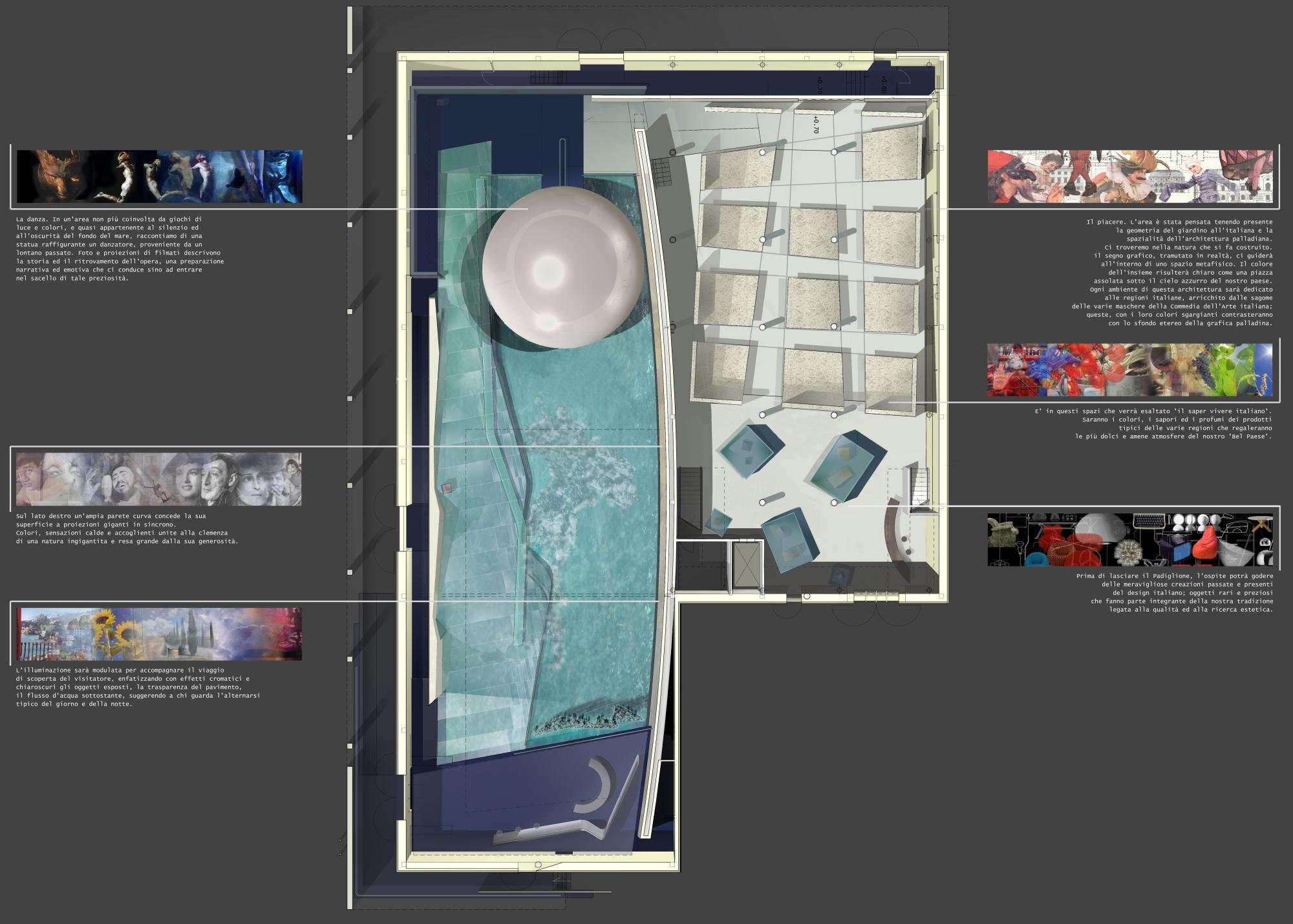
Architectural – Elevations
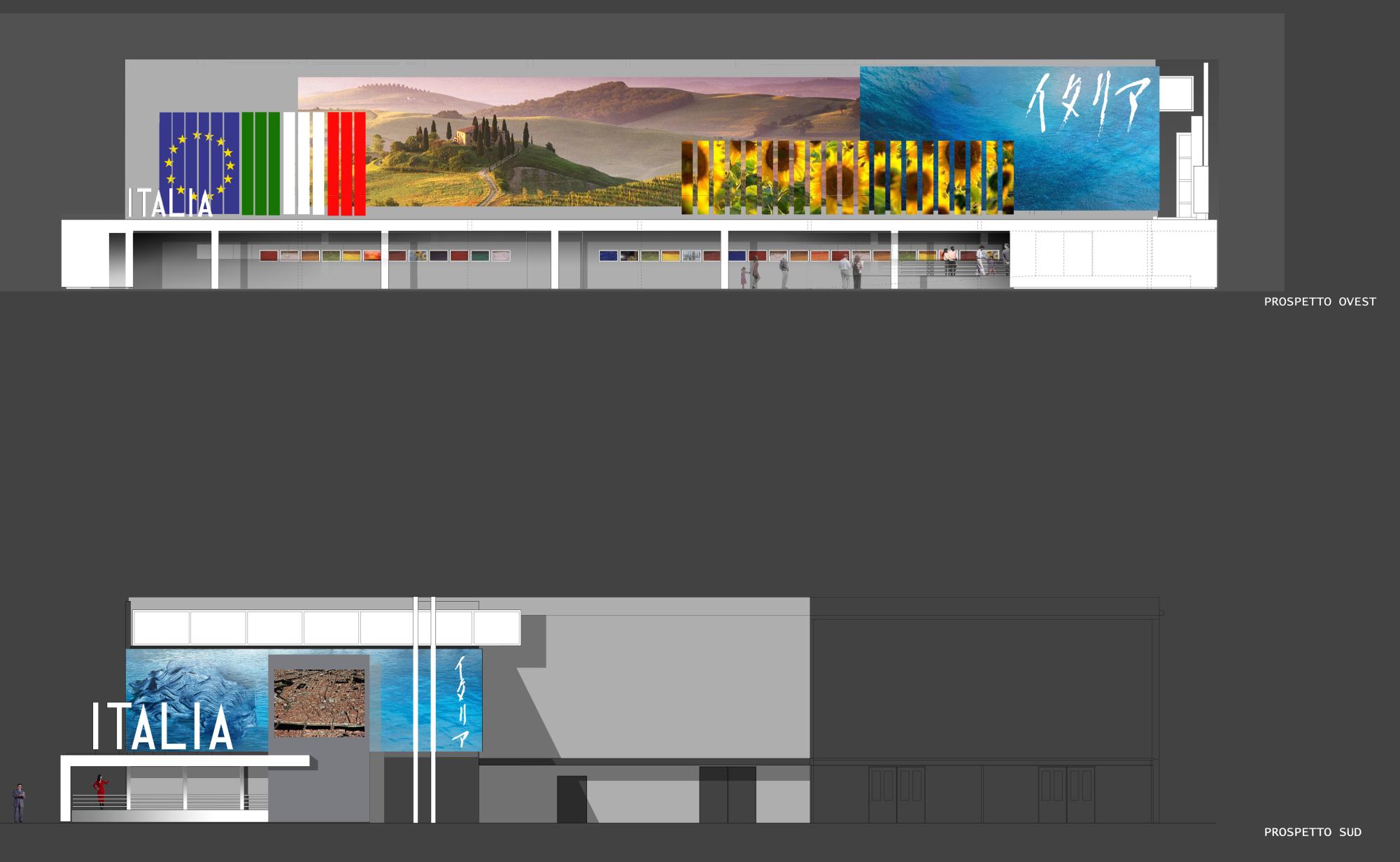
Longitudinal sections
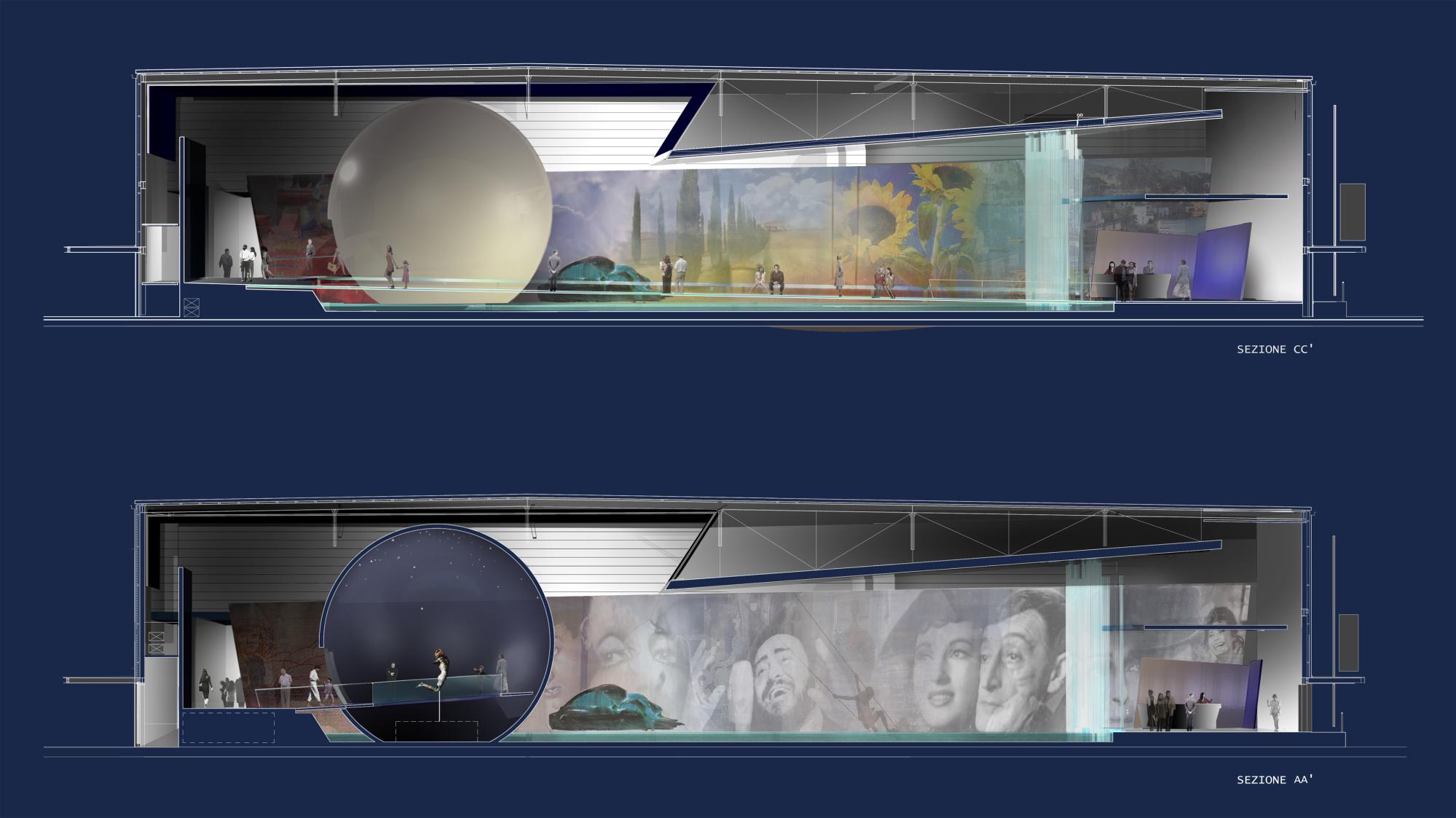
Dwg project
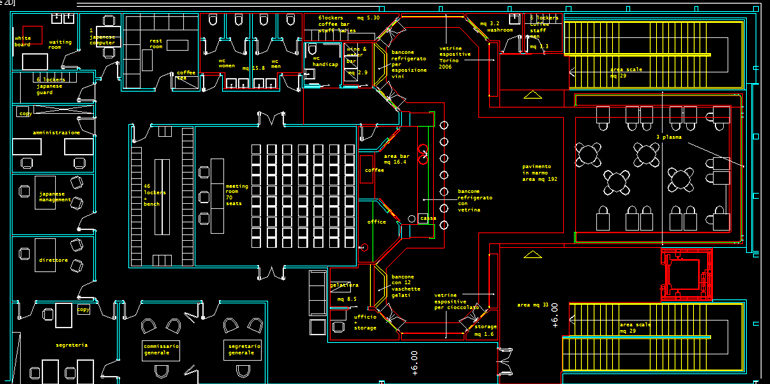
Cross section dance
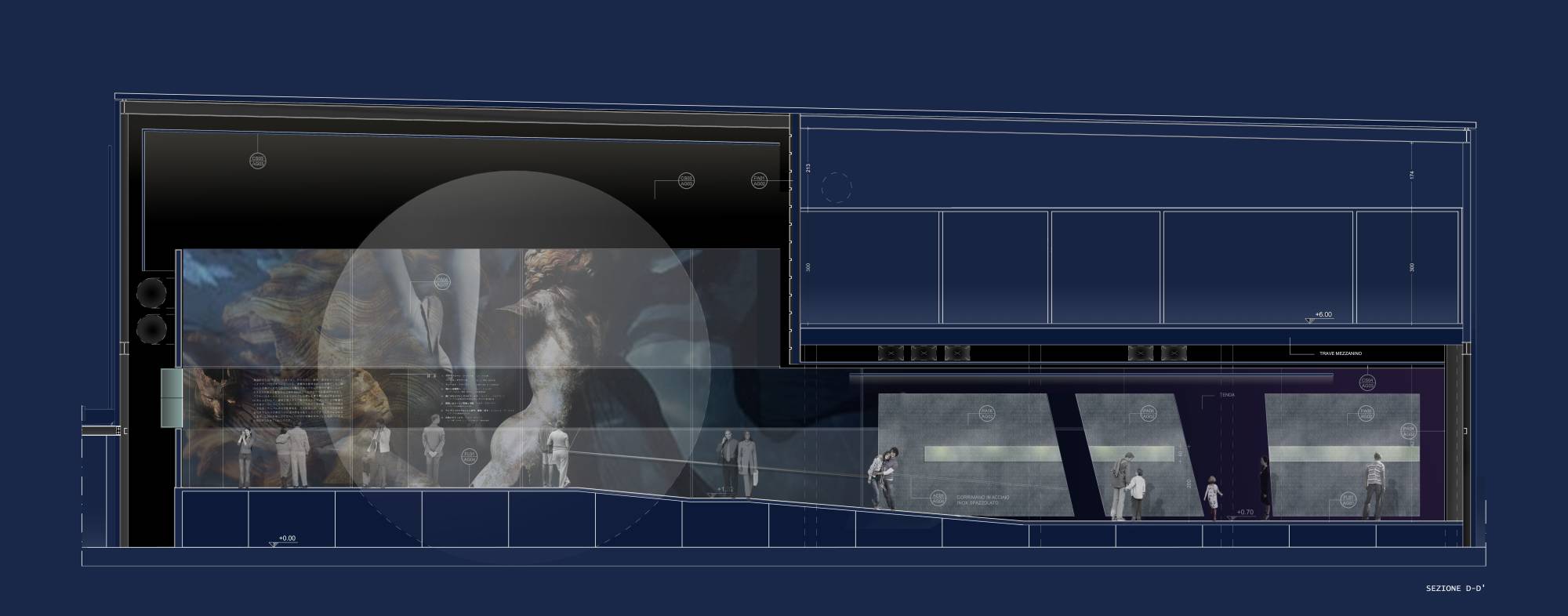
Regions area section


Render of project
Restaurants
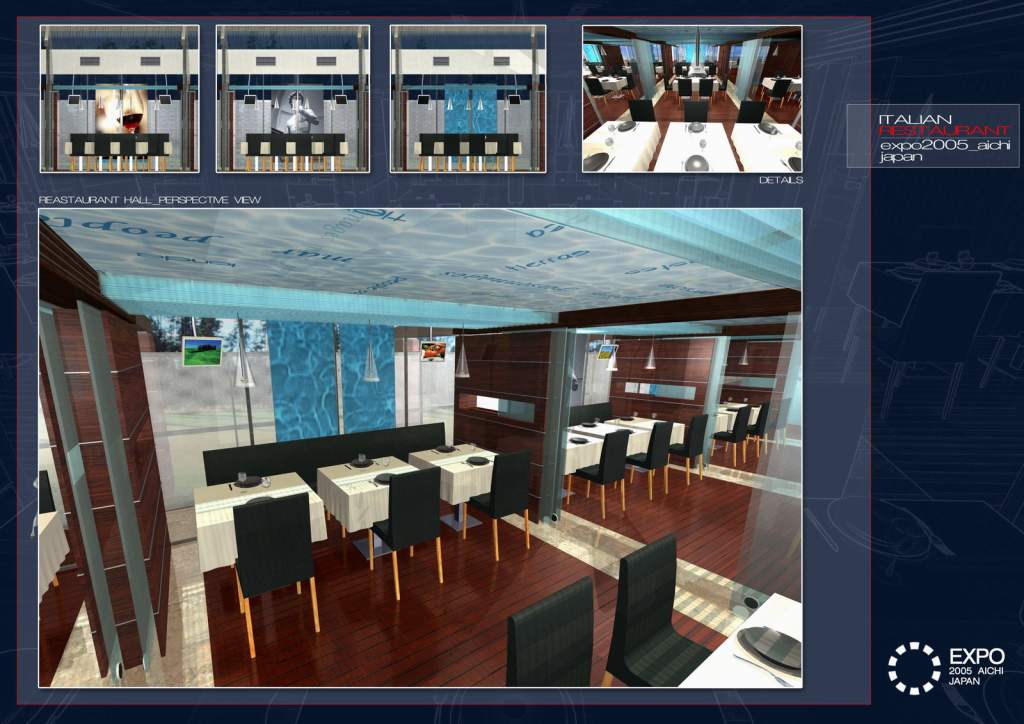
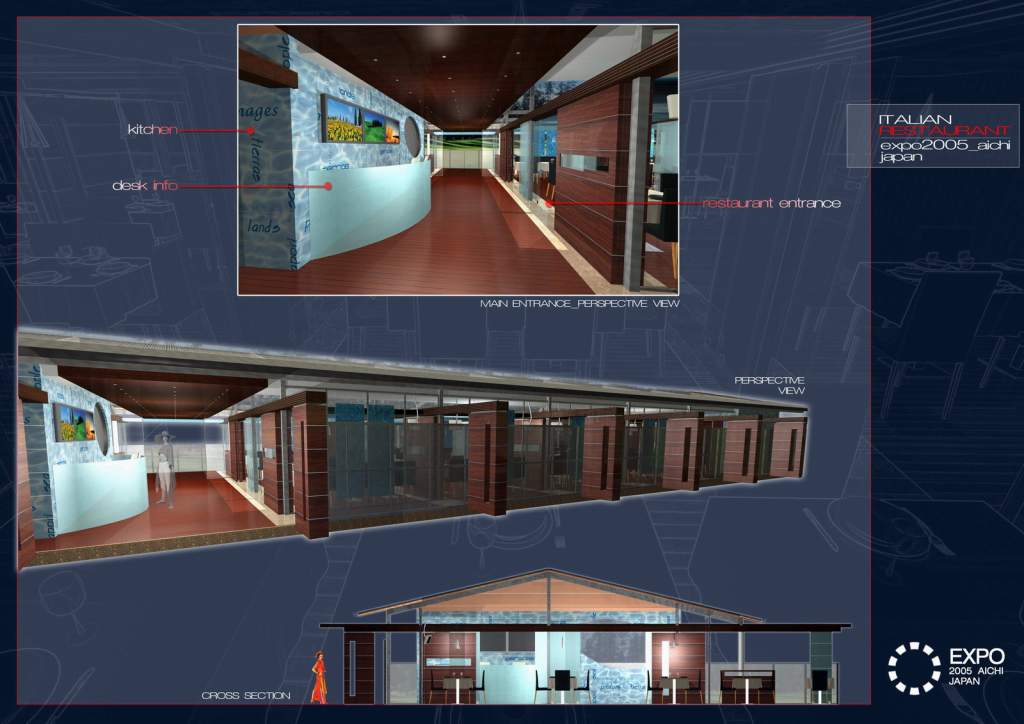
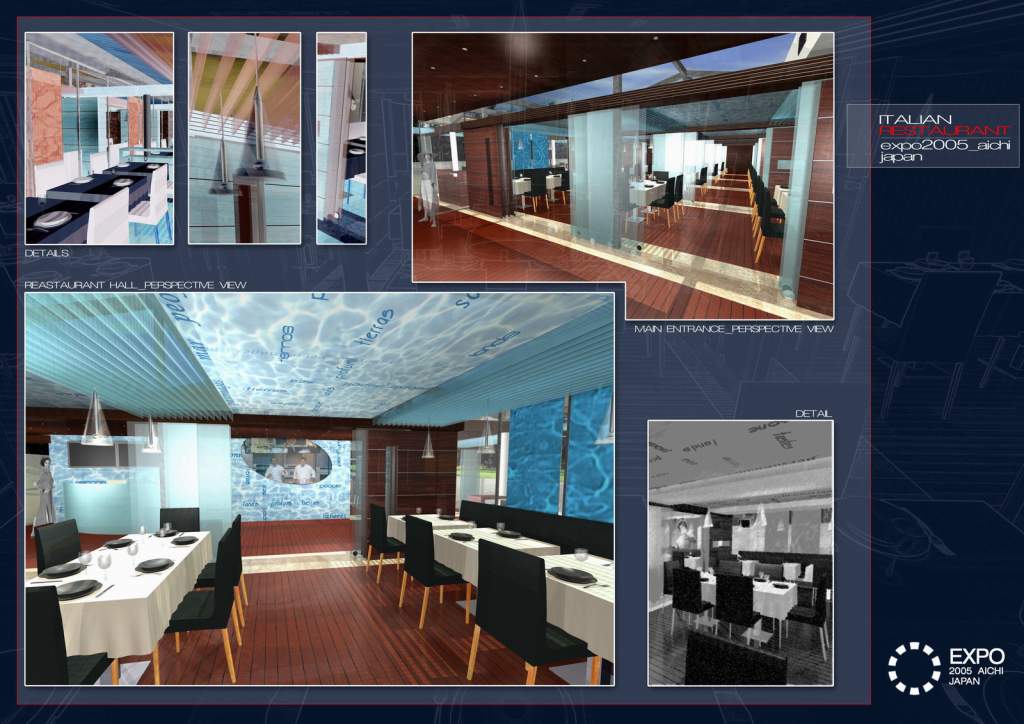

Photographs of the Italian Pavilion
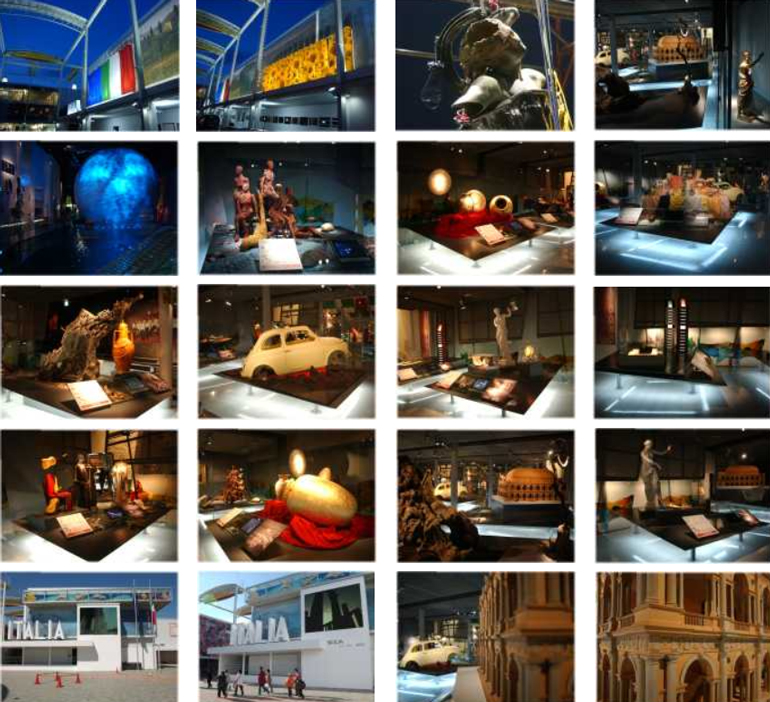
Render Room
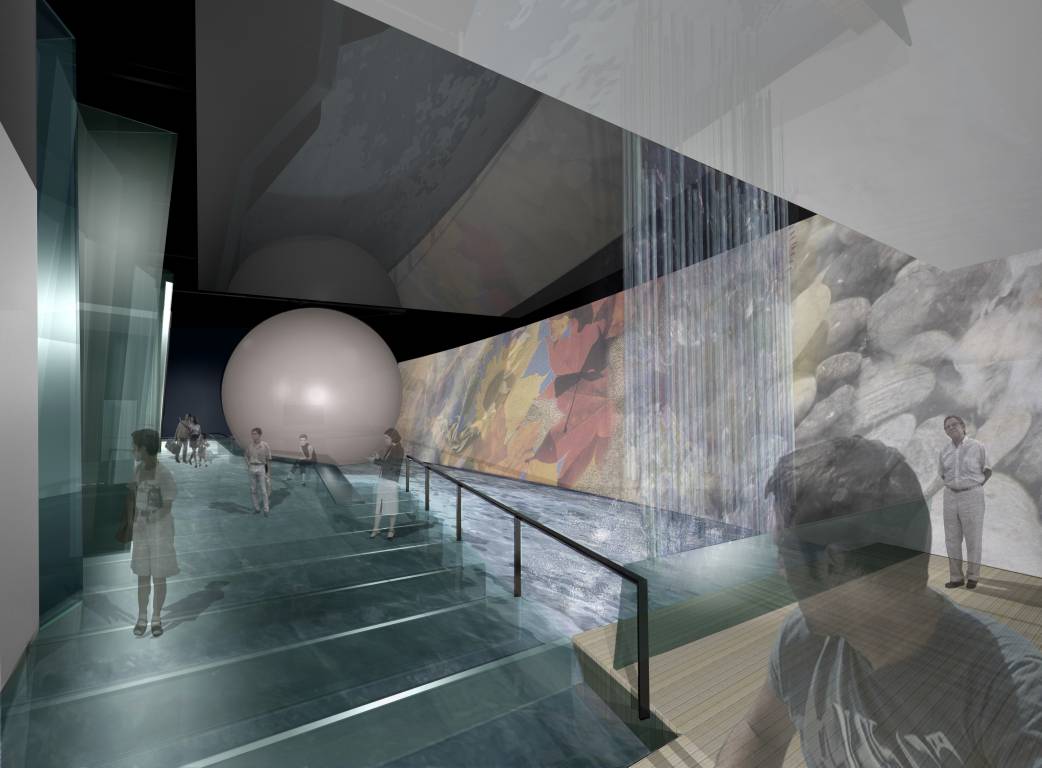
Render Regions
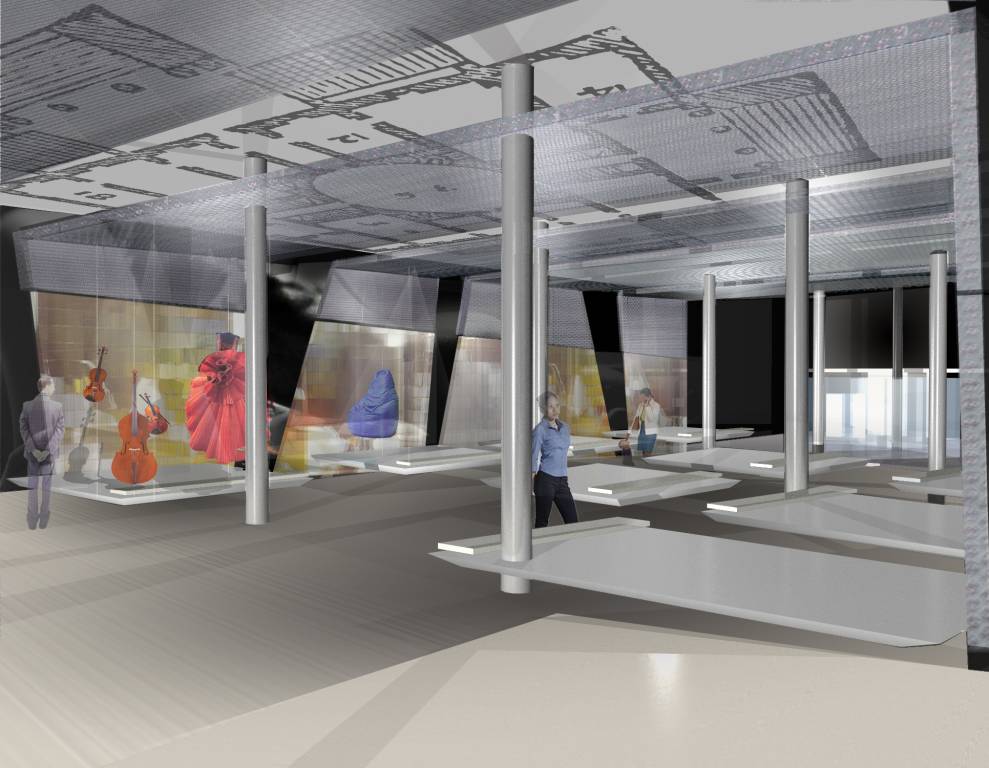
Source: http://www.expo2005italia.it
General Commissioner of the Italian Government for the World Expo 2005 Aichi, Japan
































































